#aztec art
Explore tagged Tumblr posts
Text
#RattlesnakeAppreciationDay :


Knotted Rattlesnake
Aztec, Postclassic 1100-1520 CE
Basalt, H 11 1/4 x W 16 in. (28.5 x 40.64 cm)
The Walters Art Museum 29.2
“Compact and smoothly polished, this rattlesnake displays typical Aztec sculptural techniques. Both the musculature of this snake's body and its head have been sculpted in great detail. The eyes were probably once inlaid, and ferocious fangs descend from the snake's upper jaw. Snakes were powerful symbols throughout Mesoamerican history, linked with the sky, rain, and agriculture. Aztecs may have seen the snake's shedding of its skin as a metaphor for the cyclical nature of life, death, and rebirth.”
#animals in art#animal holiday#carving#sculpture#basalt#Aztec art#Mesoamerican art#Indigenous art#snake#rattlesnake#animal iconography#Walters Art Museum#animal effigy#Rattlesnake Appreciation Day#stone#figure
132 notes
·
View notes
Text
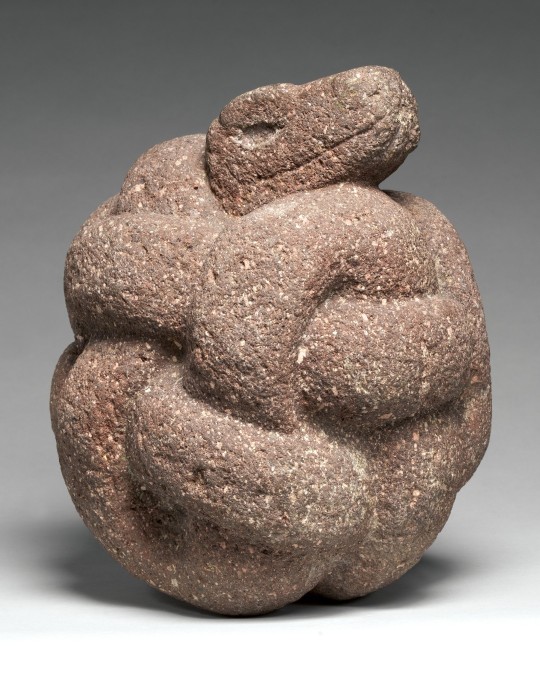
Coiled serpent - Aztec, 15 century
1K notes
·
View notes
Text
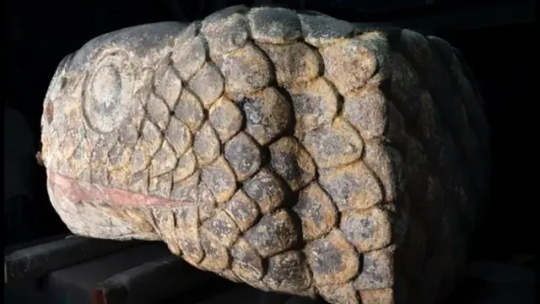
Earthquake Reveals Aztec Snakehead Beneath Mexico City
Researchers are conserving a rare snakehead from the Aztecs that still retains its painted colors from hundreds of years ago.
An earthquake last year revealed a big surprise beneath a law school in modern-day Mexico City: a giant, colorful snakehead from the Aztec Empire.
The snakehead dates back more than 500 years, to when the Aztecs controlled the area, which at the time was part of the flourishing capital of Tenochtitlan. The sculpture was discovered after a magnitude-7.6 earthquake struck Mexico City on Sept. 19, 2022; the seismic event caused damage and changes in the topography, revealing the snakehead beneath a building that was part of a law school at the National Autonomous University of Mexico, Mexico's National Institute of Anthropology and History (INAH) said in a Spanish-language statement.
The Aztecs built temples and pyramids and worshipped a number of deities, including Quetzalcoatl, who was often depicted as a snake. However, it's unclear if this sculpture depicts him, the archaeologists said.
The sculpted snake is 5.9 feet (1.8 meters) long, 2.8 feet (0.85 m) wide and 3.3 feet (1 m) high, and it weighs about 1.3 tons (1.2 metric tons), the INAH said. Several colors — including red, blue, black and white — are preserved on the sculpture.

Color was preserved on about 80% of the sculpture's surface. To keep it preserved, an INAH team lifted the snakehead out of the ground with a crane and constructed a humidity chamber around the sculpture. This chamber allows the sculpture to lose humidity gradually, with its color being preserved, María Barajas Rocha, a conservationist with the INAH who worked extensively on the sculpture, said in the statement.
While other snakehead sculptures have been found at Tenochtitlan, this one is particularly important for its preserved colors, said Erika Robles Cortés, an archaeologist with the INAH.

"Thanks to the context in which this piece was discovered, but above all, thanks to the stupendous intervention of the restorers-conservators led by Maria Barajas, it has been possible to stabilize the colors for its preservation in almost all the sculpture, which is extremely important, because the colors have helped us to conceive pre-Hispanic art from another perspective," Robles Cortés told Live Science in an email.
The sculpture's "sheer size is impressive, as well as its artistry," but the survival of the colors is remarkable, said Frances Berdan, a professor emeritus of anthropology at California State University, San Bernardino who was not involved with the excavation. "The survival of black, white, red, yellow, and blue paints is particularly interesting — one gains a good image of the visual impact of such sculptures as they were arrayed about the city center," Berdan said in an email.

In addition to its preserved colors, the snakehead's size is notable, said Bertrand Lobjois, an associate professor of humanities at the University of Monterrey in Mexico who is not involved in the excavation. The "first time I saw this serpent head, I was dazzled by its dimensions," he said in an email.
Lobjois also praised the conservation work that allowed the colors to survive, noting that "the conservation process allows us to appreciate the naturalistic approach of figuration" the Aztec artists used.
This work is ongoing and will continue at the site into next year.
By Owen Jarus.
#Earthquake Reveals Aztec Snakehead Beneath Mexico City#National Autonomous University of Mexico#Quetzalcoatl#sculpture#stone sculpture#ancient artifacts#archeology#archeolgst#history#history news#ancient history#ancient culture#ancient civilizations#aztec culture#aztec history#aztec mythology#aztec gods#aztec empire#aztec art
624 notes
·
View notes
Text



You can purchase my exclusive prints on Redbubble.
#art#aiart#digital#digitalart#mexico#mexican art#chicano#chicano art#aztec#aztec art#city#ancient#landscape#beautiful#painting#turquoise#native#native art#natives#native pride#muse#muse inspo#inspo#rph#lol#space#planets#solar system#universe#illustration
13 notes
·
View notes
Text

Aztec historical art by Angus McBride
12 notes
·
View notes
Text

"Alien Mind" by Street Grapes - instagram.com/streetgrapes
Acrylic on hard board, 8"x10", 2012
#street grapes#acrylic painting#acrylic#painting#fine art#aztec gods#aztec mythology#aztec culture#aztec art#contemporary art#contemporary painting#traditional art#psychedelyc art#psychedelia#trippy art#trippy#aboriginal#aboriginal art#mask art#cultural symbolism#aesthetic symbols#symbolism#artists on tumblr
8 notes
·
View notes
Text

Statuettes - Templo Mayor Museum, Mexico City, 2014
#original photographers#photographers on tumblr#travel#mexico#aztec art#mask#ancient art#art#statuette#aztec culture
33 notes
·
View notes
Text

Aztec calendar woodburned. 12" round. It was the base of a clock I made but I can't find the finished picture. 😕
4 notes
·
View notes
Text
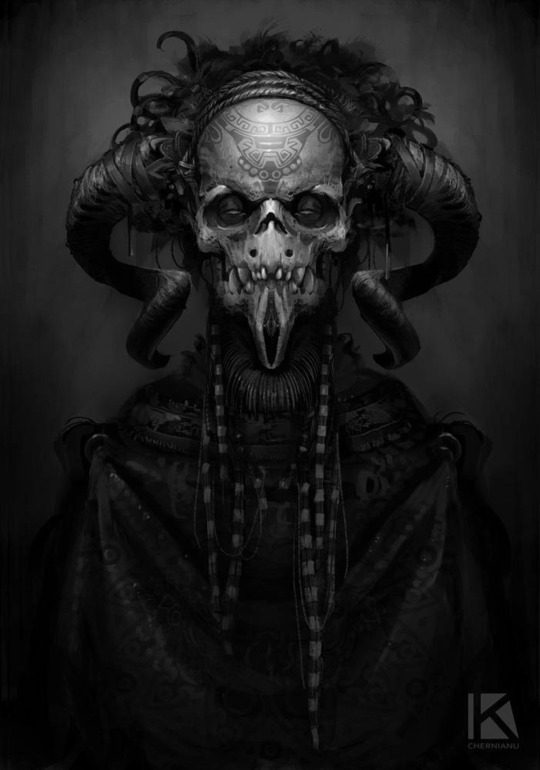
Kostya-PingWIN
11 notes
·
View notes
Text
life-death mediator

quality crop, plus simple

liked my paper artwork so lined it as a digital art practice, still suck at it
#art#ethnic#ethnic art#digital art#oc#aztec#aztec art#a slightest resemblance#blue#artists on tumblr#is it sort of#slight nudity#graphic art
19 notes
·
View notes
Text

Plumed serpent, artist unknown (Aztec), c. 1200-1500
5 notes
·
View notes
Text
#ManuscriptMonday + #MarsupialMonday:

Opossum characters are found in several Mesoamerican codices; here is an amazing sequence from the Aztec Codex Fejérváry-Mayer of an opossum warrior-god performing a ritual decapitation.
http://www.famsi.org/research/graz/fejervary_mayer/ (original now in the National Museums Liverpool collection)
#animals in art#illuminated manuscript#codex#Aztec codex#Aztec art#Mesoamerican art#Indigenous art#opossum#Manuscript Monday#marsupial#Marsupial Monday#Codex Fejérváry-Mayer#Mesoamerican codex
32 notes
·
View notes
Text
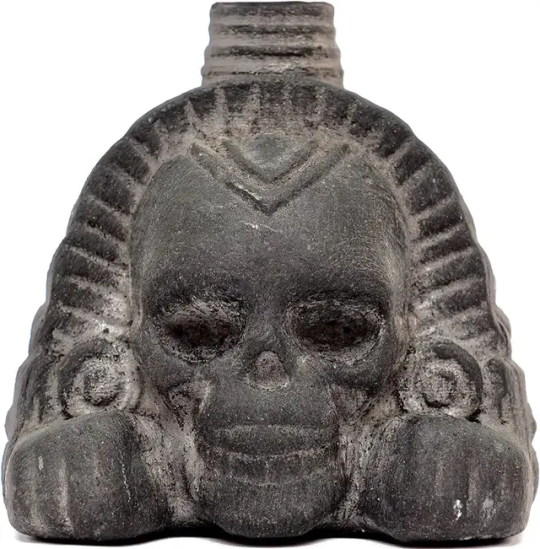
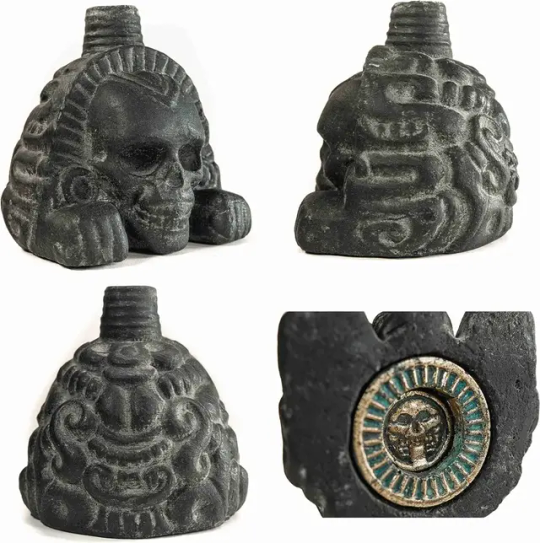
The Aztec Death Whistle ‘The Most Terrifying Sound in the World’
For those who want to celebrate Halloween like it’s 1399: Scientists are sending shivers down the internet’s collective spine by recreating an ancient “Aztec Death Whistle” that’s said to emit the “most terrifying sound in the world.”
The macabre kazoo is detailed in a new video produced by the Action Lab, a group of proud internet nerds who specialize in mind-bending experiments.
“The sound that the death whistle makes innately strikes fear into your heart,” intones presenter James J. Orgill in the clip while holding a 3D-printed version of the instrument.
The Brigham Young University engineering grad then plays an audio clip of the scream machine, which evokes a bloodcurdling, bansheelike shriek resembling a sound effect from a haunted house attraction. (We dare you not to jump!)
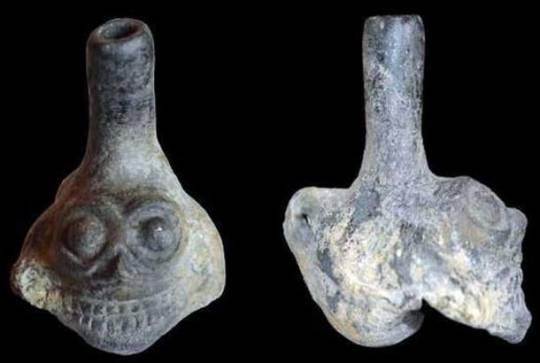
Orgill points out that this is not a “human scream” but rather the sound emitted by the replica of a skull-shaped artifact originally discovered in Mexico City in 1999 by archaeologists.
It was reportedly found clutched in the hand of a headless skeleton in a temple dedicated to the wind god Ehecatl — one of many sites where the Aztecs conducted human sacrifices.
Initially thinking it was a toy, per Orgill, scientists didn’t blow into it until 15 years later, whereupon it emitted a terrifying sound.
“‘It was a startling discovery because it sounded like a screaming human,” said the burgeoning YouTube star, who dubbed it the “most terrifying sound in the world.”

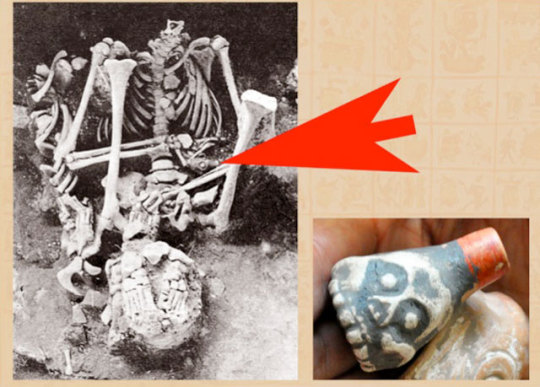
The Aztecs were able to create this nightmarish noise by modeling the death whistle after the human larynx.
When the user blows into the instrument, the wind divides in two, producing oscillating sound waves that bounce around a large chamber before leaving via a second hole.
While the purpose of the instrument remains unclear, experts have several theories, with some believing this fright flute was used to scare enemies in battle.
Others postulate that the whistle was a defense talisman used to ward off evil spirits during a sacrificial victim’s journey to the afterlife.
In order to resurrect this symphony of screams for our listening “pleasure,” Orgill blew into different Tim Burton-esque whistles that were 3D-printed by US tech firm HeyGears.
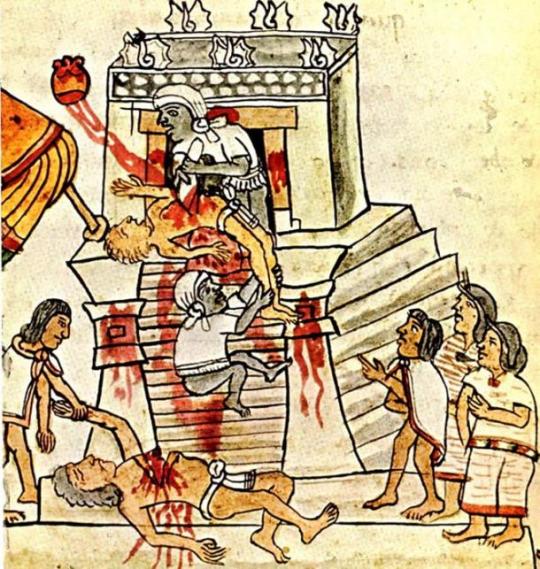
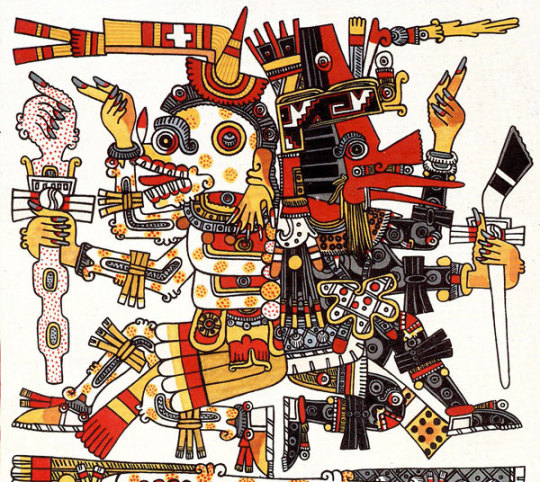
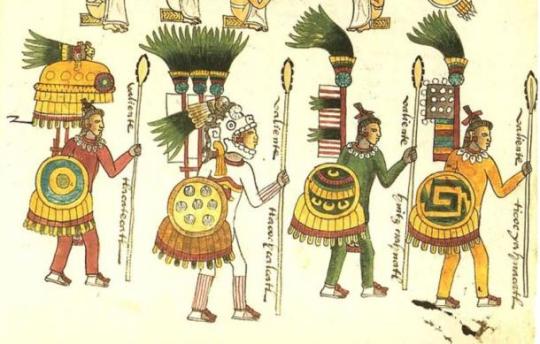
All told, they made the raptor larynx from “Jurassic Park” sound like a kazoo.
No 3D printer, no problem: Interested parties can buy their death whistles on Amazon, which offers duplicates made of materials ranging from resin to carbon fiber.
Many advertise how closely their decibels match that of the most bone-chilling human screams.
By Ben Cost.
#Aztec Death Whistle#The Aztec Death Whistle ‘The Most Terrifying Sound in the World’#Tlatelolco#mexico city#the wind god Ehecatl#ancient artifacts#archeology#archeolgst#history#history news#ancient history#ancient culture#ancient civilizations#aztecs#aztec history#aztec mythology#aztec culture#aztec gods#aztec empire#aztec art
247 notes
·
View notes
Text



You can purchase my exclusive prints on Redbubble.
#art#aiart#mad max#furiosa#madmax#mad_max#mad#max#muse#inspo#inspiration#rph#sci fi#fantasy#apocalyptic#post apocalyptic apocalypse#desert#aesthetic#landscape#digital#digitalart#mexico#mexican art#chicano#chicano art#aztec#aztec art#city#ancient#beautiful
13 notes
·
View notes
Text

Texoticihuatl slays the Great Gar that threatened the humans of fith creation
2 notes
·
View notes
Text

close up of one of the aztec coaster set
11 notes
·
View notes